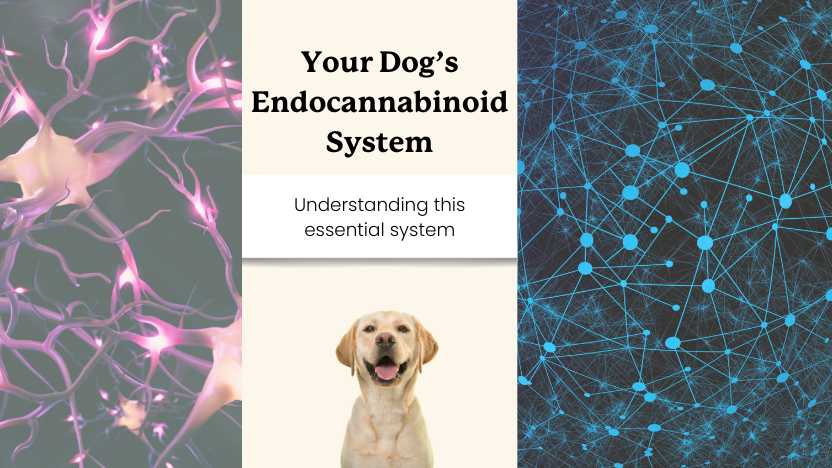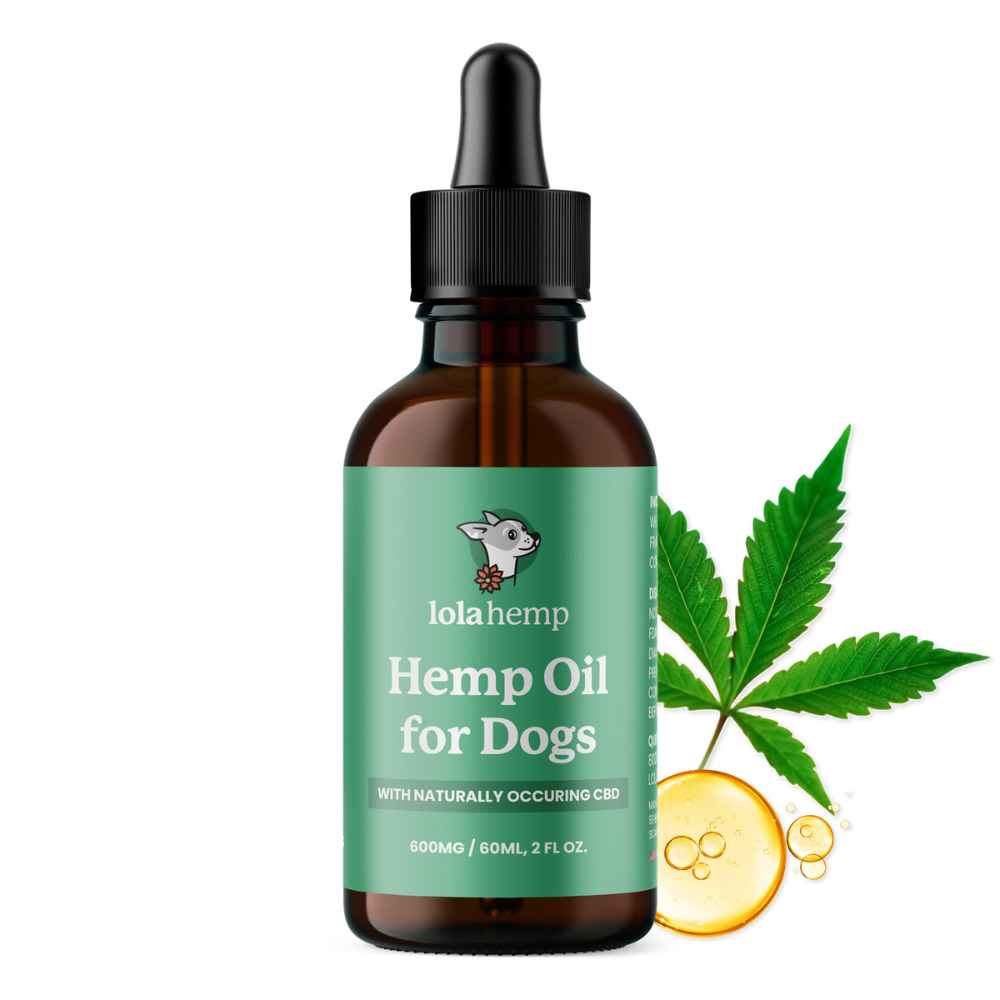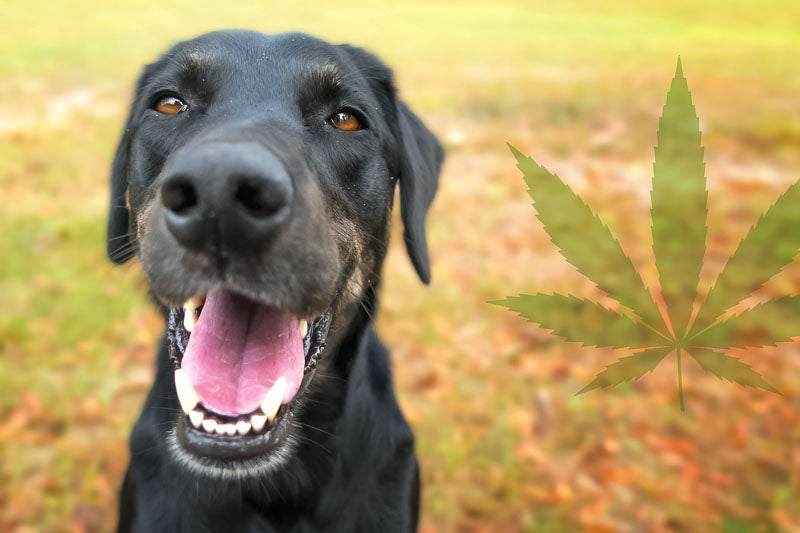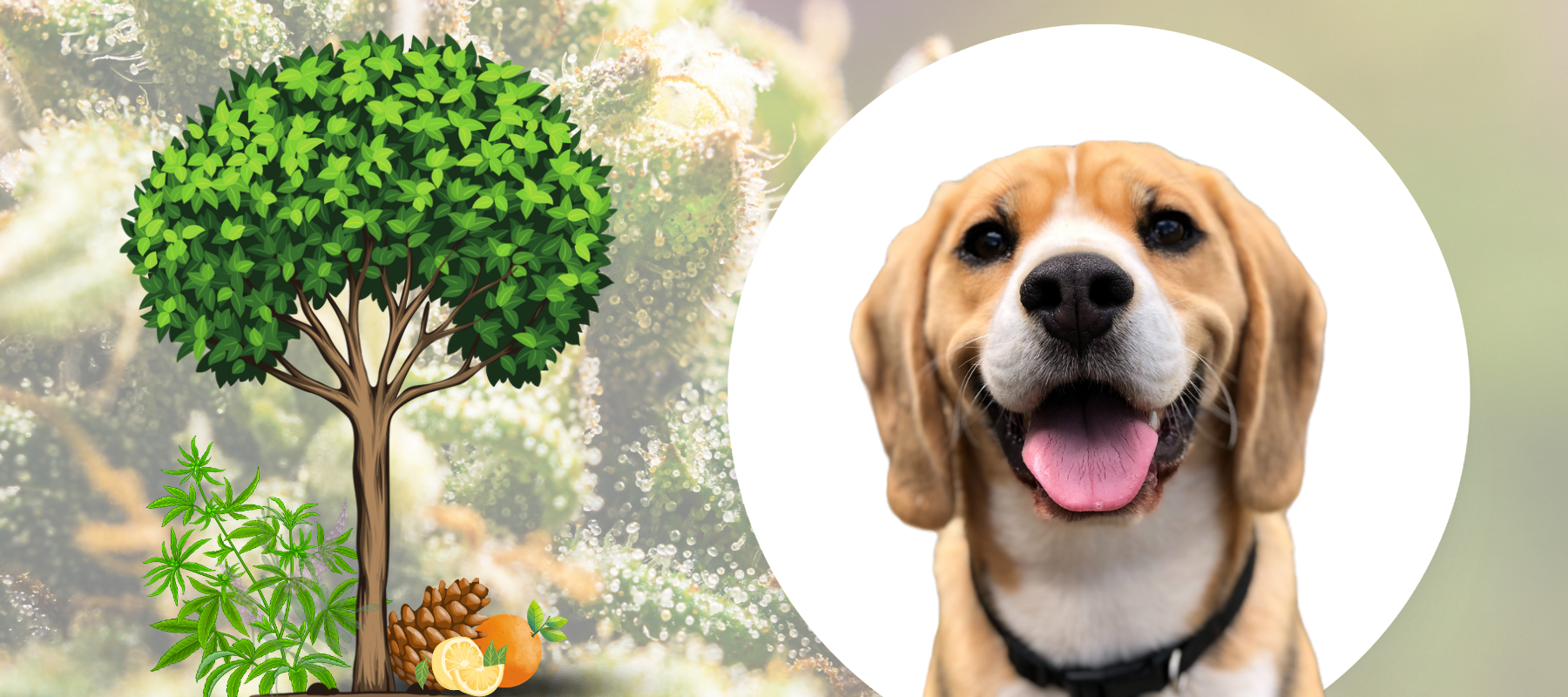When it comes to CBD, many resources discuss its effects on the endocannabinoid system. But what is this mysterious body system? How does it work, and how does CBD work with it? Read on for a crash course on the endocannabinoid system, its parts, its role in your body, and more.
What Is the Endocannabinoid System in Dogs?
The endocannabinoid system (ECS) is a natural biological system found in all mammals. That includes dogs, cats, and the human body!
The endocannabinoids, receptors, and enzymes that make up the ECS are too small to see, even under a microscope. Still, the system is essential for our health and well-being.
Your endocannabinoid system is active even if you don't use cannabis (marijuana) or CBD. Plant-derived cannabinoids like CBD and THC affect us by interacting with parts of our ECS. Scientists discovered CBD and THC decades before we understood how cannabinoids work, so the endocannabinoid system is named after them.
The Endocannabinoid System and Canine Homeostasis
But what is the ECS doing, exactly? We'll discuss the many roles of the endocannabinoid system in detail shortly. Overall, the function of the ECS is to keep other biological systems in balance.
Every day, the body performs an incredible balancing act called homeostasis. Homeostasis is the biological principle that living things require a narrow, pre-set range of conditions to survive.
Body temperature is a helpful example of homeostasis. After all, only a few degrees span the gap between hypothermia (95 °F) and a dangerously high fever (105 °F).
The endocannabinoid system uses perfectly timed molecular signals to keep our body temperature in the "safe zone." It sends adjustment cues to our skin, brain, and other organs when we're too hot or cold.
Every feature of the body has a similar "just right" range, meaning the endocannabinoid system is always hard at work.
Parts of Your Dog's Endocannabinoid System
Body temperature is one of many examples of how the ECS keeps us in biological balance. But, a surprisingly short list of parts is responsible for most of the system's wide range of functions.
Each part of the ECS generally falls into one of three categories:
- Endocannabinoids: Cells in the body produce these natural molecules to talk with one another and change cellular behavior. There are two main endocannabinoids; anandamide and 2-AG.
- Endocannabinoid receptors: Cells can only interpret signals from anandamide and 2-AG if they have a way to receive those messages. The two primary endocannabinoid receptors, CB1 and CB2, detect anandamide and 2-AG. They then trigger a response to help move the body back toward homeostasis. What that response looks like depends on location: a cell in the central nervous system will do different things to return to its "safe zone" than one in the gut.
- Enzymes: With all of these endocannabinoid signals flying around, someone has to clean up. Two enzymes, FAAH and MAGL, break down the anandamide and 2-AG. The FAAH and MAGL enzymes help calm things down once the body's balance, or homeostasis, has been restored.
What's The Purpose of the Canine Endocannabinoid System?
Maintaining homeostasis is a massive, important job. The endocannabinoid system interacts with many organs and processes to help re-establish biological balance. Because of this "managerial" role, the ECS influences a long list of body functions.
Importantly, research on the roles of the endocannabinoid system is still ongoing. Scientists have only recently begun exploring how the endocannabinoid system works, its functions, and how we can support it to improve well-being.
Still, we do have some details. Here are some of the primary roles played by the endocannabinoid system.
For Dogs, The Endocannabinoid System's Role in Joint Health is a Primary Focus
The role that the ECS plays in inflammation is a key focus for pet owners looking to support their dog's joint health. Thousands of dog owners have seen significant results when giving their pets cannabinoids in hopes of improving joint health.
The ECS isn't limited to one area of canine health however. The following are a few more of the roles that the endocannabinoid system plays.
1. Memory
Researchers have associated the CB1 receptor with the natural forgetting, or extinction, of old memories. This process occurs in healthy brains to make room for new information. But, the connection may also explain why the psychoactive component of cannabis, THC, is associated with short-term memory loss (1).
The endocannabinoid system also supports memory through its involvement in the birth of new brain cells. In adults, a brain region called the hippocampus generates new brain cells (neurons). These new cells support our ability to remember facts and events from the past. Research shows that CBD may support the production of new neurons by preventing endocannabinoid breakdown (2).
2. Appetite
Anyone familiar with cannabis knows about "the munchies," or the increased feelings of hunger after using THC-containing products. Interestingly, this oft-reported sensation occurs through THC's interactions with the ECS.
THC produces its psychoactive effects or "high" by binding to CB1 receptors in the brain. This natural ECS receptor usually connects with the endocannabinoid anandamide. Together, the two help tightly regulate hunger in a brain region called the hypothalamus.
However, THC is a much more potent activator of CB1 compared to anandamide. It kicks the hypothalamus into overdrive, resulting in exaggerated hunger signals.
3. Sleep
Endocannabinoid system signals in the brain are associated with sleepiness. Based on research in mice, the endocannabinoid anandamide affects sleep in multiple ways.
First, anandamide levels in the brain seem to follow a circadian rhythm. In other words, the amount of anandamide changes from day to night (4). A healthy circadian rhythm is crucial for restful sleep.
Second, anandamide affects brain levels of a compound called adenosine. High levels of adenosine promote sleepiness. Caffeine keeps you alert by blocking your brain's adenosine-sensing receptors! In contrast, anandamide increases adenosine, making you ready for bed.
4. Exercise
Did you know that anandamide gets its name from the Sanskrit word for bliss? The name does fit. Scientists have found that the "runner's high," or positive feelings induced by exercise, come partly from increased blood levels of anandamide (5).
The Endocannabinoid System: Key Takeaways
Like many biological processes, the endocannabinoid system is a complex, interactive network that scientists are still working to understand.
However, we do know that the ECS plays an essential role in maintaining balance in the body's many interconnected systems, a state called homeostasis.
Plant-derived cannabinoids affect us by interacting with the ECS. While THC triggers a response directly by binding to the brain's endocannabinoid receptors, CBD takes a gentler approach in dogs. Hopefully, scientists will continue studying the ECS, and we'll have even greater insight into this incredible system soon.









